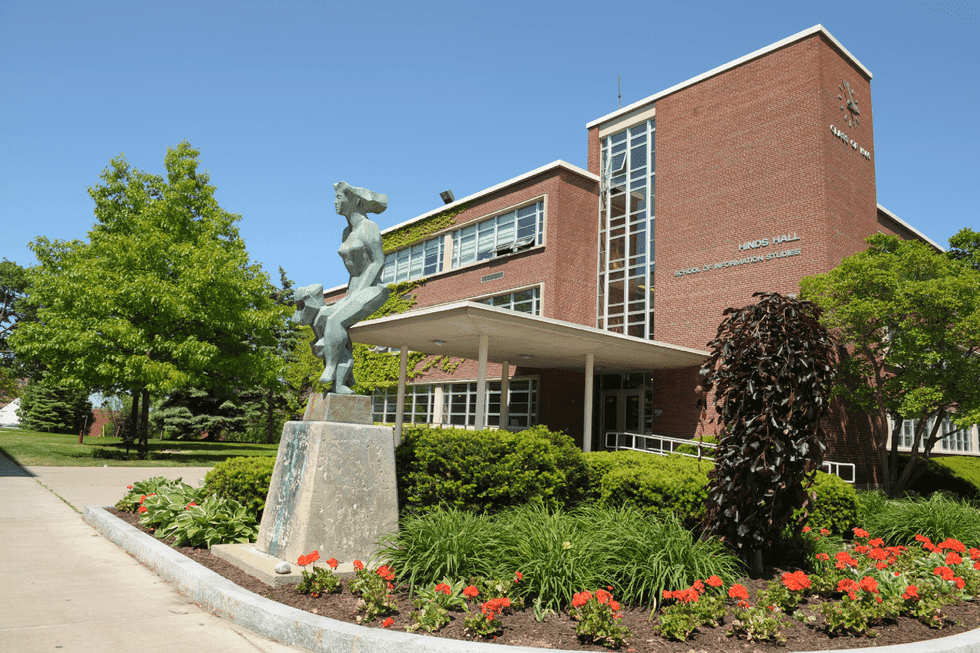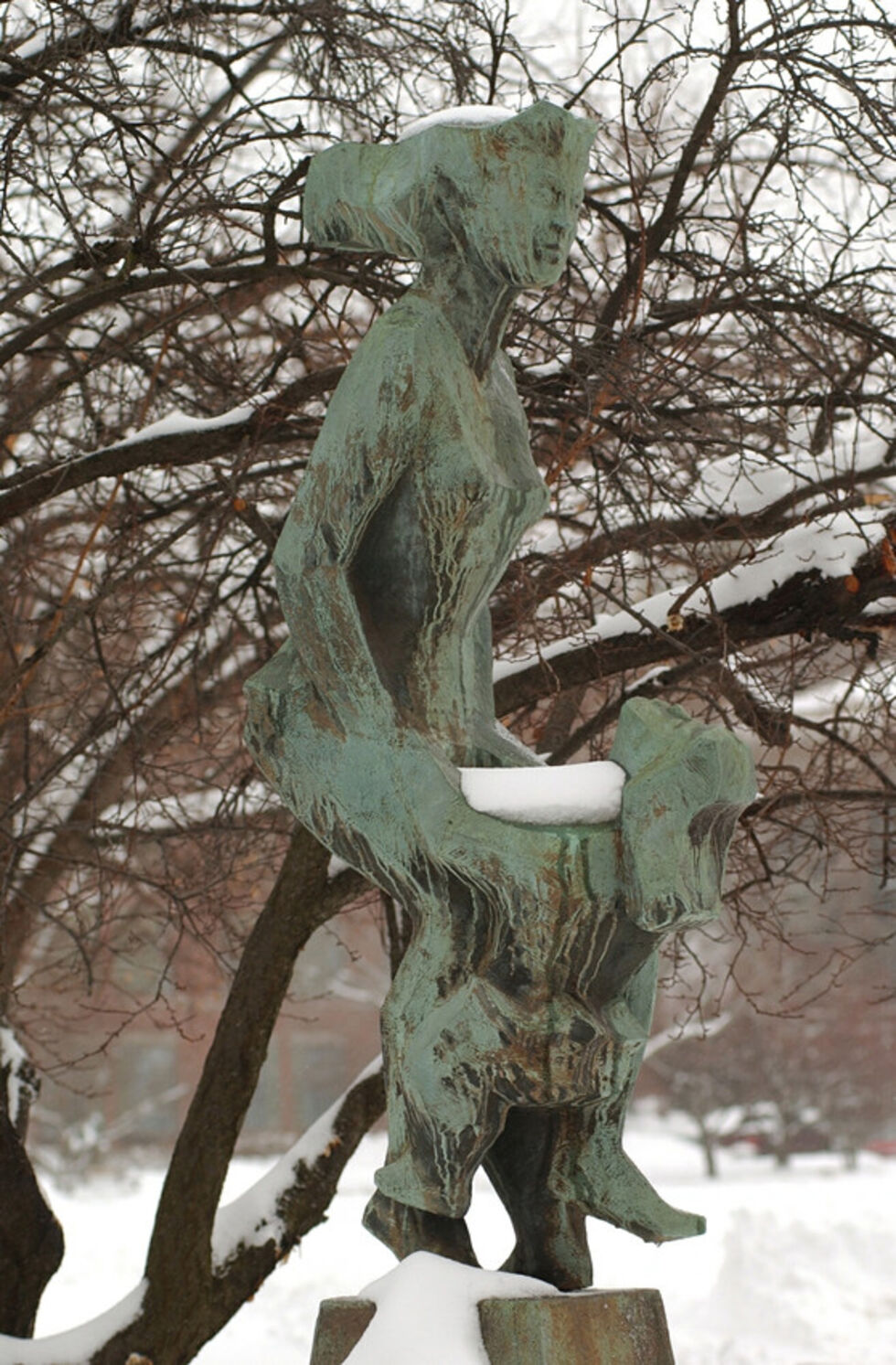Dancing Mother Sculpture
"The Dancing Mother" by Chaim Gross , 1956
The Dancing Mother is a bronze sculpture created by Austrian artist Chaim Gross. This bronze sculpture celebrates the intimacy between mother and child. The Dancing Mother is located between Hinds Hall and Huntington Beard Crouse, and is 5 feet tall and 2 feet wide. A gift of Helen and Saul Rosen, the sculpture shows the happy mother leaning back and lifting her child to dance. Gross depicts the spirit of the union of mother and child by physically melding the two forms into one. This bond, formed by dense, solid masses, is characteristic of Gross’s distortion of naturalistic forms for the sake of unity and balance. The bronze sculpture today appears green as it is covered with patina, a film produced by oxidation over time.
Chaim Gross began working with bronze as a medium in the 1950s. Gross first created Dancing Mother in 1954 as a 17” tall carving in mahogany. In 1956, he cast a 5’10” bronze of the same figure. Gross’ whole body of work is dominated by the theme of relationships: mother and child, birds nesting, or children perched like birds on a mother’s arm or leg. The subject of Dancing Mother, which was intended for monumental scale and public space, affirms the life-giving forces of our deepest and most constructive personal relationships.
Chaim Gross was born March 17, 1904 in the Carpathian Mountains in Austrian Galicia to a Jewish family. He had a nomadic childhood due to World War I and spent time in Budapest and Vienna before emigrating to New York City in 1921. Gross began drawing at a young age and displayed a definitive sculptural element. Hence upon his arrival in New York took night classes at the Educational Alliance art school. Soon he decided to pursue sculpture as a medium and began studying with famed sculpture artist, Elie Nadelman at the Beaux-Arts Institute of Design. Then in 1927 Gross attended the Art Students League and had a brief direct carving training stint with Robert Laurent, also a renowned sculptor of his time. It was that same year that Gross started his sculpture teaching career at the Educational Alliance, which continued until 1989. Gross is considered a pioneer for his direct carvings in wood. The years 1926 through 1949, Gross’ work was seventy-five percent in wood and about ten percent in stone. His sculptures were mostly tribal, figurative images of women. It wasn’t until after World War II, that Gross began exploring different techniques and subjects. He began to focus on Judaic subject matter because of his family that was affected by the Holocaust. By 1957, Gross sculptures casted in bronze outweighed direct carvings in wood. Gross was most remembered as a foremost American sculptor with his figurative subjects, graphic work and most importantly his hardwood carvings. Chaim Gross passed in New York at Beth Israel Hospital on May 5, 1991.
SU University Archives; SU Photo and Imaging Archive; Chaim Gross Biography. The Renee and Chaim Gross Foundation website.


